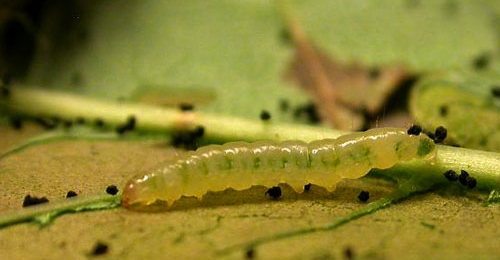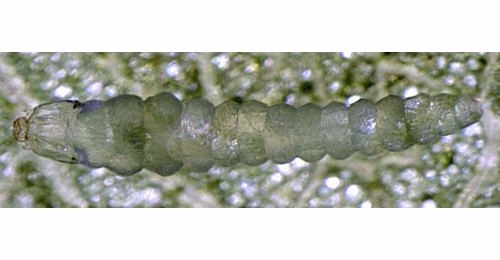|
||||||
|
SYRINGA. Lilacs. [Oleaceae] |
|
One species and one hydrid of Syringa are recorded in Britain. Both are introduced and include Lilac (S. vulgaris). Two British miners are recorded on Syringa. A key to the European miners recorded on Syringa is provided in Bladmineerders van Europa. |
|
Key for the identification of the known mines of British |
1a > Leaf-miner: Initially an epidermal mine on the upper surface of the leaf, later the mine starts to contract and the leaf concealing the mine. Now the larvae leave the mine and live freely in a downwards rolled leaflet (Catalogue of Belgian Lepidoptera). Larva solitary in an elongate upper-surface epidermal (thence silvery) mine. Frass initially in a rust-coloured central line. Later, when the mine starts to contract and the leaf folds over the mine, the frass is black and concentrated in a corner of the mine. At this point the larva leaves the mine, and starts living freely in a downwards rolled leaflet. The mine can be distinguished from that of G.syringella on the same plant as it is a silver colour whereas that of G.syringella is brownish. Pupation in a flimsy white cocoon, attached hammock-wise within the final cone (Catalalogue of Belgian Lepidoptera). |
 Caloptilia cuculipennella larva, lateral Image: © Chris Snyers (Bladmineerders van Europa) |
|
| Caloptilia cuculipennella (Hübner, 1796) [Lepidoptera: Gracillariidae]. |
1b > Leaf-miner: Larvae usually gregarious. Early mine an epidermal gallery leading to a contorted blotch with black frass. Subsequently two successive cones formed by folding the tip of a leaf downwards (British leafminers, as Caloptilia syringella). Often, many leaves on a single bush turn brown and curl up with the mines. The species can be a pest in gardens. The mine begins at a row of eggs along the midrib. The emerging larvae form relatively broad, inconspicuous, lower-surface corridor. Subsequently a large, grey brown or greenish brown, very opaque upper-surface blotch is made, occupied by ten or more larvae. The mine makes the leaf somewhat bumpy, but the leaf does not fold around the mine, like in Caloptilia cuculipennella. After some time the larvae leave the mine and continue feeding, still comunnally, in a downwards rolled leaf. |
 Gracillaria syringella larva Image: © Willem Ellis (Bladmineerders van Europa) |
|
Gracillaria syringella (Fabricius, 1794) [Lepidoptera: Gracillariidae]. |
| Last updated 30-Jan-2018 Brian Pitkin | ||
